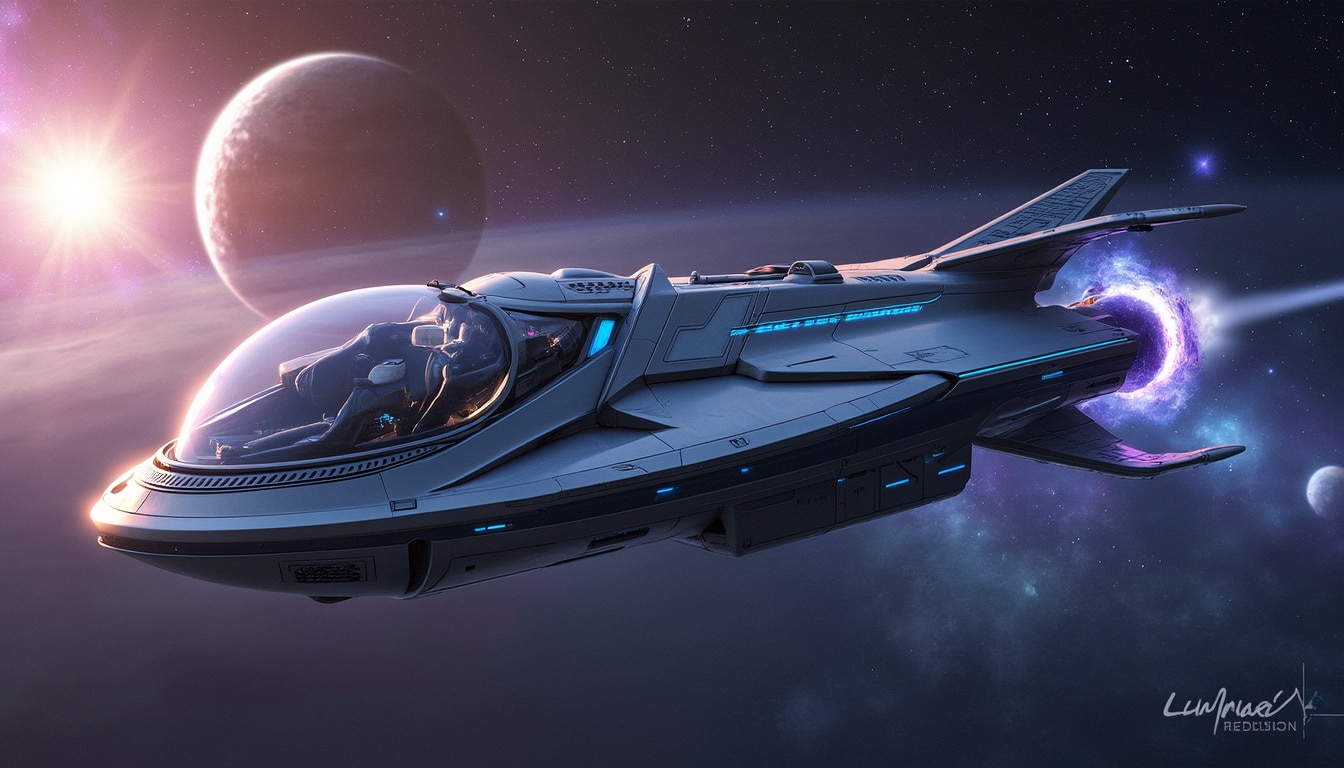SpaceX is poised at the forefront of a new era in space exploration, striving to develop a smaller version of the iconic Starship, dubbed the Mini-Starship. Backing from Congress, along with ambitious plans from NASA and other competitors, underscores the urgency and significance of this endeavor. With essential timelines surrounding human landings on the Moon and Mars looming, understanding the stakes—both technological and geopolitical—has never been more crucial. This article delves into the multifaceted dimensions of SpaceX’s mission, highlighting the engineering challenges, competitive landscape, and the potential impact of a new Mini-Starship on future space exploration missions.
With SpaceX’s next-generation Starship facing many hurdles and a fast approaching deadline for lunar missions, Congress has expressed apprehension about whether the U.S. can maintain its leadership in the emerging space race. The timeline is tight, and a streamlined solution, such as the Mini-Starship, may hold the key to achieving these aspirations and solidifying America’s standing in the cosmos.
Understanding the Need for a Mini-Starship
The increasing focus on lunar exploration has reignited interest not just in NASA’s Artemis program but also in America’s capabilities in the upcoming Space Race II. The goal to land astronauts on the Moon by 2028 necessitates innovation, particularly in transportation technology. Engineers and lawmakers recognize that developing a Mini-Starship could solve many logistical issues faced by the larger Starship currently in production.

The Artemis Program and Its Challenges
The Artemis program, intended to return humans to the Moon, has seen significant financial investment from NASA, including contracts worth over $4 billion with SpaceX. However, skepticism about meeting the timeline has emerged, spurred by technological complexities such as refueling requirements for long-distance missions. Congressman Mike Haridopolos has emphasized that this is a pivotal moment, likening it to the Apollo program’s significance in American history. The need to expedite human lunar landings has also led to discussions surrounding alternatives to Starship, thus giving rise to the idea of a Mini-Starship.
Experts like Daniel Dumbacher, who previously served in key NASA roles, have cautioned that the current architecture may not permit timely lunar landings without innovations such as a smaller, refuelable lander. Such innovations could accelerate achieving the objective of human landings, laying the groundwork for eventual Martian exploration.
Engineering Innovations Behind the Mini-Starship Concept
The Mini-Starship design, championed by industry experts like Robert Zubrin, aims to create a spacecraft that balances size with efficiency. This includes reducing the mass and complexities involved in lunar landings while maintaining adequate capabilities for Martian missions. One proposal is that the Mini-Starship could act as a ‘Starboat,’ shuttling astronauts between the orbital Starship and the planetary surfaces, thus streamlining operations.
A significant advantage of the Mini-Starship would be its ability to operate using simpler technologies, allowing NASA and SpaceX to bypass some of the hurdles encountered with larger spacecraft. The design, while still a prototype, hints at the feasibility of utilizing significantly less propellant for returns from both the Moon and Mars. Notably, Zubrin argues for a dual-sized architecture where both Starship and Mini-Starship coexist, enhancing operational flexibility while optimizing mission success.
The ramifications of successful implementation of the Mini-Starship will extend beyond lunar missions; it has the potential to revolutionize how scientists and explorers approach Mars missions. With efficient shuttle launches between the Martian surface and orbit, a newfound scope for exploration could open up, allowing for greater reach across the red planet for astronauts.
The Competitive Landscape of Space Exploration
SpaceX is not alone in its pursuit of space exploration. Major companies such as Blue Origin, Lockheed Martin, Boeing, and Rocket Lab are also vying for their stake in the burgeoning space race. With various entities targeting similar goals, the competition is heating up, prompting innovative advancements and strategic planning across the board.
The Role of Other Private Sector Players
Many private companies, including Virgin Galactic and Northrop Grumman, are enhancing their capabilities in designing and launching spacecraft. NASA’s ongoing discussions with various contractors will likely influence the direction of new space tech developments. The innovation sparked by this competitive environment has contributed to improving operational efficiencies and safety in space travel.
As we bear witness to these developments, the entrepreneurial spirit encapsulated by the push surrounding the Mini-Starship reinforces the relevance of collaboration within the industry. By leveraging shared knowledge between firms, efficiency can be maximized—ultimately allowing for more rapid advancements in technology.
The Global Space Race
The quest for lunar exploration reflects a broader geopolitical narrative, as nations and companies seek to assert themselves as leaders in space exploration. This renewed interest echoes some of the sentiments from the original Space Race. Now, the stakes are both scientific and ideological. Leaders like Zubrin have posited that the competitive nature of this race will shape both the technical advancements and strategic partnerships formed in the years to come.
Furthermore, international players will likely challenge American leadership on these fronts, highlighting the necessity for a project like the Mini-Starship to solidify the U.S. foothold in future exploratory endeavors. The prospect of more nations joining the race for interplanetary colonization only amplifies the urgency for the U.S. to innovate and act swiftly.
Forecasting the Future of Space Exploration
The timelines surrounding the launch and operation of the Mini-Starship are critical to future missions slated for the mid-2020s. SpaceX’s updated roadmap includes ambitious plans to integrate smaller spacecraft technologies successfully. This proactive approach is intended to enhance mission confidence and take a more significant next step towards colonization, especially on Mars.
Technological Milestones and Their Impact
Projected milestones such as the successful testing of the Mini-Starship prototype will serve not only as a testament to SpaceX’s innovative capacity but also as crucial signaling to investors, partners, and federal agencies. Achieving these milestones will reinforce trust in the strategy laid out by SpaceX, fostering long-term collaborations and investments that are pivotal for technology rollouts.
If the Mini-Starship serves its purpose, the developments in propulsion and environmental controls technologies could have spillover effects into commercial access to space, essentially democratizing space travel in ways previously unimagined. As the landscape evolves with more players entering the fray, the public could witness a renaissance of space exploration unlike any before.
Preparing for a New Era of Cosmic Discovery
The coming years will usher in significant changes in how agencies and companies approach space missions. The blend of governmental support through organizations like NASA and private-sector determination from firms like SpaceX, Blue Origin, and others, creates an atmosphere ripe for unprecedented advancements.
Efforts to blueprint missions to Mars stand to gain significantly from technological synergies created within this newfound competitive climate. Each test, launch, and iteration will further refine systems that bring humanity closer to becoming an interplanetary species.
The potential for such advancements reflects the essence of why humans have always sought to explore the unknown. With the intricate dance of ambitions, resources, and innovation, humanity is set to take its place among the stars–and the Mini-Starship will be a stepping stone toward realizing that dream.
Environment and Sustainability in Space Exploration
As the budding space exploration industry amps up, considerations surrounding environmental impact and sustainable practices have gained traction. Consequently, the discourse now includes how missions will mitigate their effects on both the celestial bodies they target and Earth.
The Sustainable Approach in Space Missions
Effective planning of lunar and Martian missions now includes an evaluation of launching technologies that also prioritize environmental conservation. Once a potential issue of logistical consideration, the carbon footprint associated with space travel is now under serious scrutiny.
Many companies, including Aerojet Rocketdyne and Planet Labs, have highlighted the importance of reducing waste generated through space missions. Initiatives focused on developing cleaner propulsion types and recycling support structures for spacecraft can set a precedent for a more sustainable future.
By approaching space exploration with environmental considerations, not only do agencies like NASA comply with changing public sentiment, but they also forge ahead in fostering innovation. As spacecraft systems evolve alongside ecological mindfulness, future missions may set a benchmark for global sustainability in numerous sectors.
Collaborative Innovations for a Greener Space Race
Establishing responsible measures in the competition for space supremacy also invites interest in collaboration among space-faring nations. Perhaps unprecedented, there may arise opportunities to share technology aimed at mutual environmental benefit. Such cooperative agreements could help to realize the goal of sustainable exploration in a way that reverberates powerfully across global ecological policy.
Furthermore, a commitment to sustainability within the realm of interplanetary exploration will ultimately earn public trust and support. Navigating the complexities of responsible planet Tampering will require both solidarity and shared responsibility among all stakeholders.
Ultimately, the advancements that arise from the pursuit of the Mini-Starship are not merely about achieving human landings on celestial bodies—they symbolize humanity’s broader aspiration of exploration, ethical considerations, and sustainability in our quest for a deeper understanding of the universe.





Leave a Reply